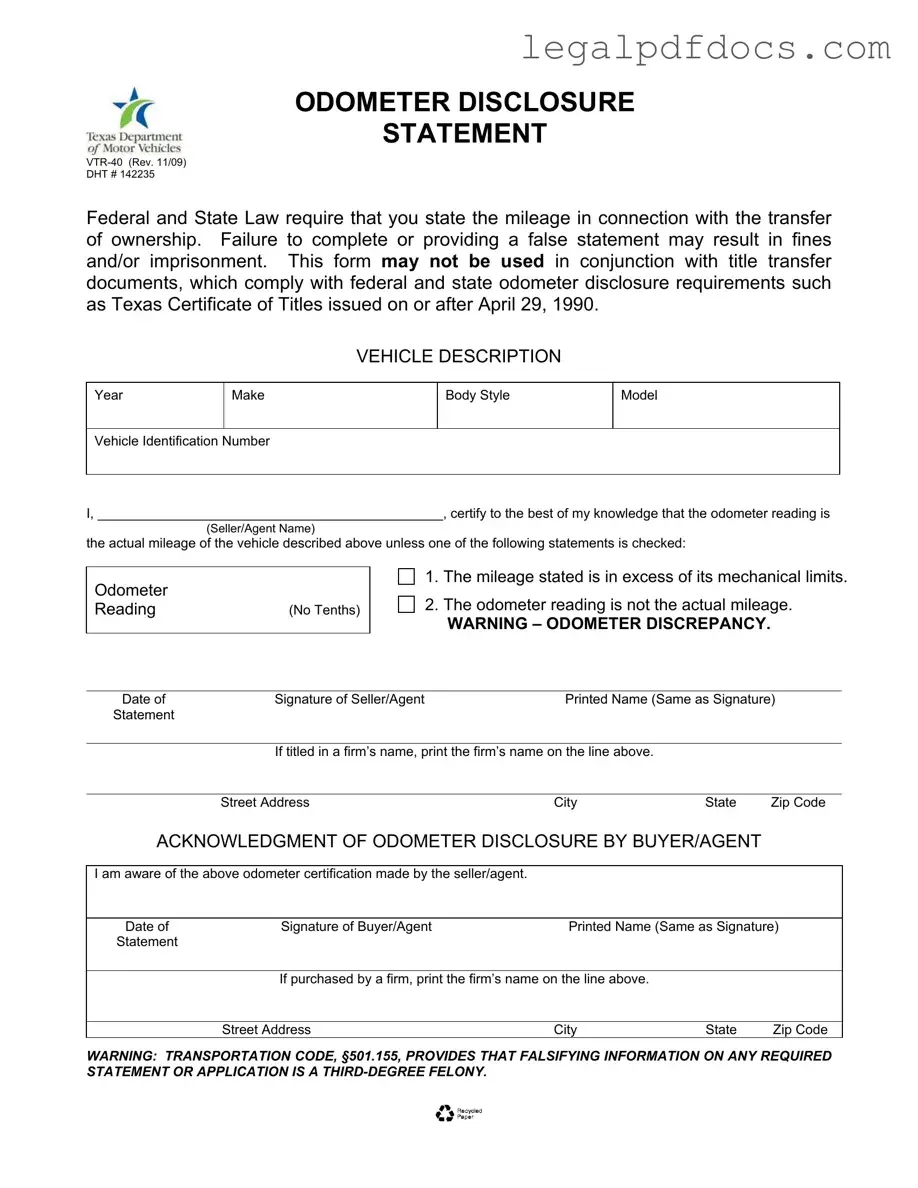Fill Out a Valid Texas Odometer Statement Template
The Texas Odometer Statement form, officially known as VTR-40, is a legal document required during the transfer of vehicle ownership. This form mandates that sellers disclose the vehicle's mileage, ensuring compliance with both federal and state laws. Failing to provide accurate information can lead to serious penalties, including fines or imprisonment.
To complete the process correctly, ensure you fill out the form by clicking the button below.
Open Texas Odometer Statement Editor Here
